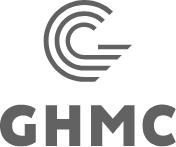
At last week’s HLTH conference, the “healthspan” theme was hard to miss. Healthspan is about more than just living longer—it’s about living those years without chronic disease or significant health issues.
It’s no surprise that upstart innovators, established healthcare leaders and superstars alike see the opportunity in this wellness-focused model. It represents a profound movement, not only in how we think about healthcare but in how the industry sustains itself financially. For years, much of the industry’s revenue has been built on managing chronic conditions—endless prescriptions, hospital stays, treatments, follow-ups. Moving toward a wellness model, where prevention vs. disease intervention, could mean a financial shake-up. Yet at HLTH, there was a sense of optimism, even promise. Attendees seemed to recognize that prioritizing healthspan is not only ethically right but could ultimately be a sustainable direction for the industry.
Pop star and Dexcom Warrior Lance Bass shared how his journey with Type 1.5 diabetes was forever changed with a glucose biosensor wearable. His story aligned with bold ideas of a future where healthcare focuses on keeping people well rather than just treating them when they’re sick. On the HLTH stage, innovations in frequent, personalized testing, wearables, AI-driven population health insights, and even compound pharmacies were discussed as driving this shift.
Of course, there’s still the lingering question: who will truly benefit from these advances? Health equity was in the spotlight at HLTH, and for good reason.
When innovation only benefits the few, it fails in its purpose. Take the rise of GLP-1 drugs, another hot topic at HLTH. These drugs have been hailed for their impact on weight loss and on inflammation caused by autoimmune diseases, and yet, their price keeps them out of reach for many. This barrier isn’t just about affordability; it’s about fairness. With the 2024 election heating up and drug pricing on the national radar, the conversation about access is more urgent than ever.
The question is no longer just about what can be achieved, healthspan is also about reach and specifically making sure it reaches everyone who needs it. One session, aptly named, “Digital Health as a Force Multiplier for Health Equity,” brought health equity officers from Health Net and Teladoc together to discuss how digital health can solve for structural inequities and create more equitable access and outcomes. And musician and activist Lenny Kravitz spoke about systemic care, making the connection between how providing comprehensive care to underserved communities can create meaningful change well beyond the healthcare landscape.
HLTH 2024 underscored a critical shift in the industry: the future of healthcare isn’t just about tech, nor is it just about extending the years we live. It’s about making preventive care accessible, affordable, and fair, so we can all live healthier, longer lives. AI was everywhere at HLTH this year, promising to deliver insights, streamline care, and transform health. But frankly, a lot of it was still the “AI buzzword soup” we’ve been hearing for years. There’s promise there, but real change will only come from authentic strategies and outreach that connects patients, providers, and innovators in meaningful ways.
For healthcare companies ready to lead the way, this isn’t the time to blend in. It’s time to speak up, make a stand, and communicate the values driving healthspan-focused care.
If you’re ready to communicate in a way that inspires real action, let’s connect.
Read more insights from HLTH here.
Perspectives

Communications
J.P. Morgan Healthcare Conference 2024: Unity and Hope Amid Industry Challenges

Communications
Attending HLTH 2024: Where Networking, Brand Boosting and Cool Collide

Communications
A Reflection on Mentoring Future Biotech Communicators

Communications
Top 5 Ways Consumer Brands Make an Impact at Medical Meetings





